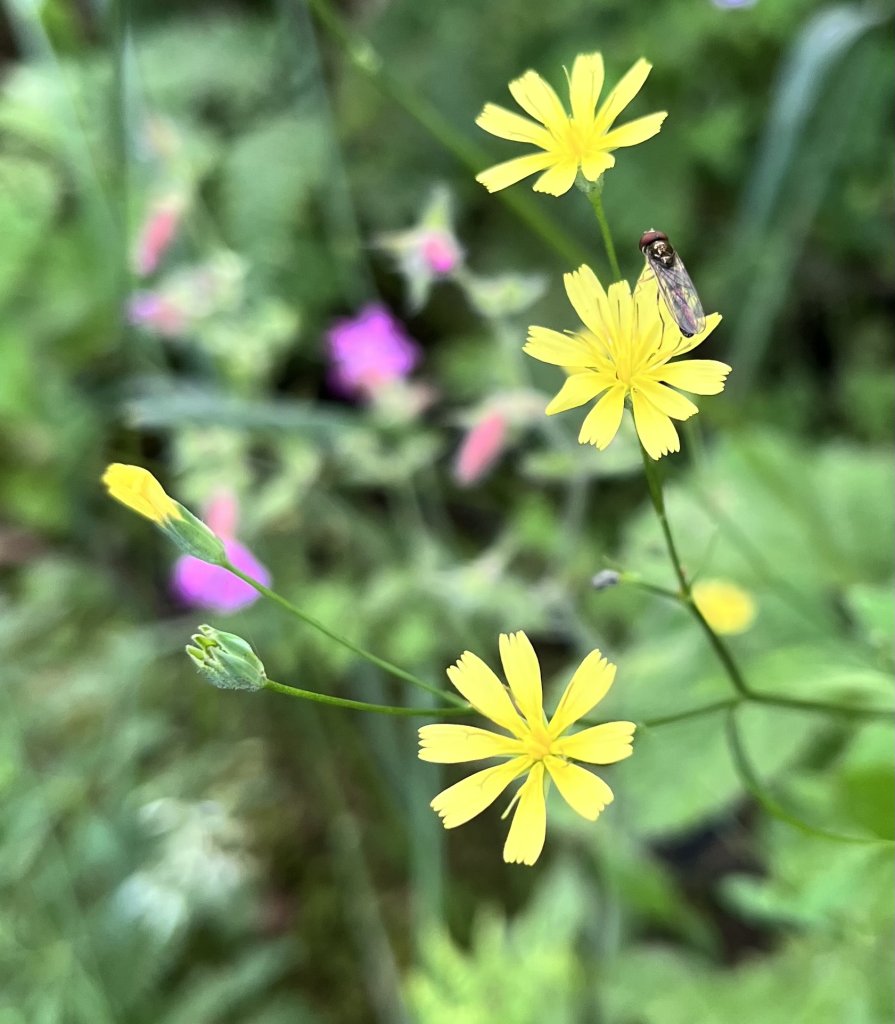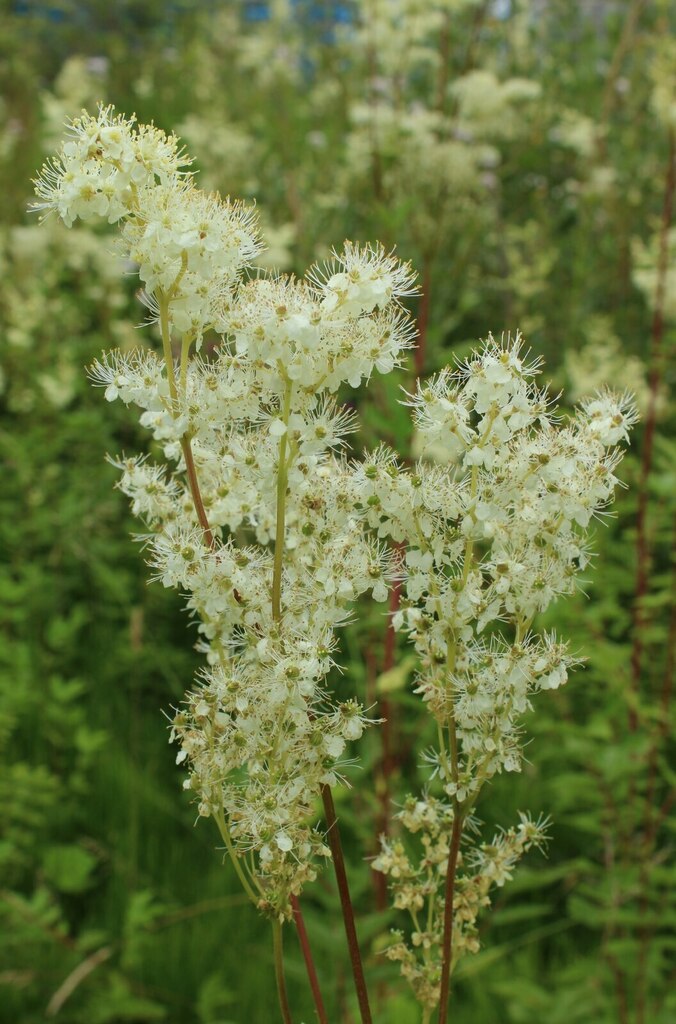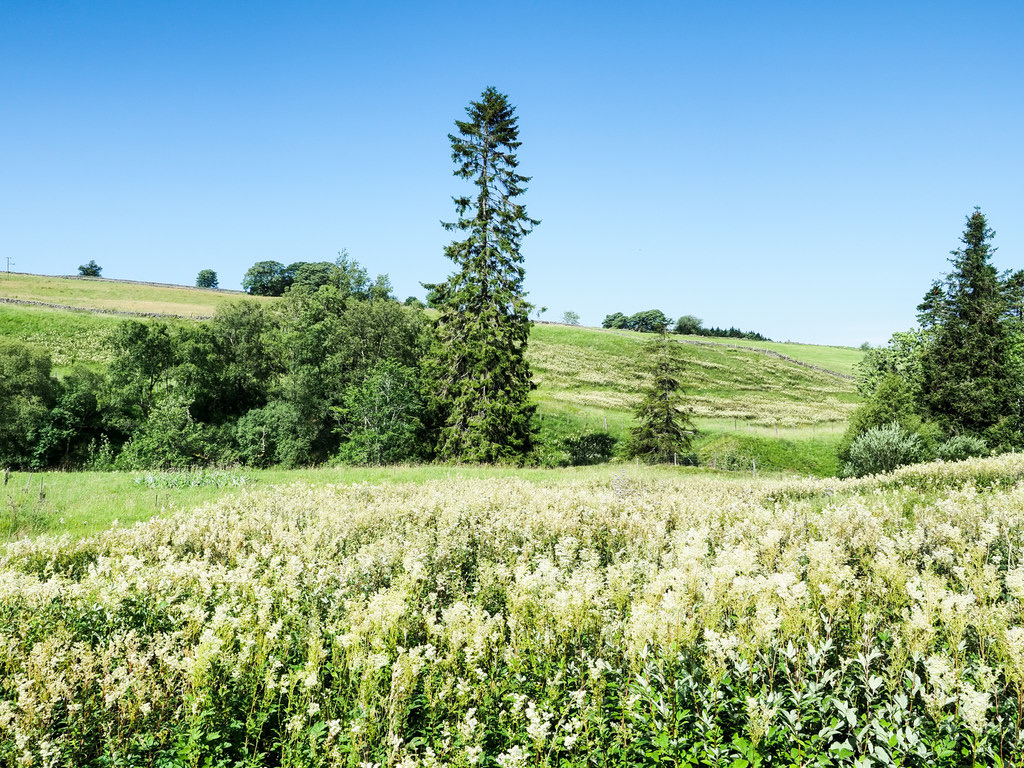A word on worts
July 12, 2025, 5:36 am , by Richard Lutz

They’re strange names…and for good reason too, says RICHARD LUTZ
There’s Bladderwort. And Liverwort. And Birthwort and that dainty yellow flower you see above which is Lapsana communis, aka Nipplewort to most of us. And of course who can forget Woundwort? Why do so many plants have names akin to the human body?
It seems it all stems from a thoroughly discredited theory called The Doctrine of Signatures which insists that if a bit of a plant resembles some part of the human body, then surely it can be used as a cure for that specific section of anatomy. Well, that was the idea back in the 1600s when it was all the rage.
As one contemporary wrote: ‘God created everything with a form of signature to help healers with cures’. So, according to him, when it came to, let’s say, Lungwort….

…it was believed that the vein-like discolouration on its petals resembled diseased lung tissue. So it was used to treat that organ’s disorders. And on it went. ‘Wort’ by the way is an Old English word for plant or herb. And if you read a bit more, you find this obscure and faulty link between plants and the human body really doesn’t have to include the suffix ‘wort’ which is only relevant anyway in English.
So you can have an elegant little flower called Eyebright (guess what that’s linked with); Walnuts which some use for headaches because it (sort of/kind of) looks like the brain; and, Bloodroot because it contains scarlet hues and therefore, I assume, will help the circulation. But enough of obsolete ideas.
Here’s something up to date and rooted in every July. And with the warm, if not hot weather, it’s been a bumper crop for meadowsweet.

It is a creamy straggly plant and thrives in marshes, roadsides, and, of course, meadows, Its fragrance is soft and nothing short of dreamy. It suffuses the air and fields. It’s such a delicious smell that the Elizabethans used it to stuff their nightly pillows. No halfbaked baseless theories here with body functions except for the nose, I guess. Many times I tried bringing meadowsweet home. But it’s a tricky fellow and by the time I get it to a vase, it’s droopy and refuses to throw out its alluring aroma.
I like it so much I’ll offer up a whole pasture of it thanks to photographer Trevor Littlewood:

Imagine drifting through that field of soft bouquets.
Imagine. Just imagine that meadow. It’s south of somewhere. Just west of someplace else. It must be like floating through the land of the lotus eaters where Ulysses’s men wanted to stay forever and never budge.
They only wanted to rest and dream. Sleep and forget. Cushioned and bolstered by the power of the lotus flower and the wonderful perfume of meadowsweet, no doubt.
pix credit: Geograph




Ray Johnston
Keep consulting the lotus
Nick Dent
Tennyson calls them the lotos eaters, but I guess either spelling will do.
Martin McCrindle
We have an uncontrollable St John’s wort at our front door. If St John ever needs a cure, we’re here for him.
Mark Berman
There is a lovely patch of meadowsweet on path to Carbeth on the West Highland Way
Sue J
much of Traditional Chinese Medicine is based on similar theories, even to this day.
TL
Good to see Ulysses in there
Tina Mara
Interesting. And so scientific- NOT
Mary Alexander
Enjoyed the worts and all
Tony Fitzpatrick
Wort a load of rubbish…!?!
Will Travel
Let’s not forget the ubiquitous St. Johns wort
Del d’Angelo
Thinking of the balmy meadowsweet and the benumbed Lotus eaters,when life gets too much.
Subscribe to new posts.